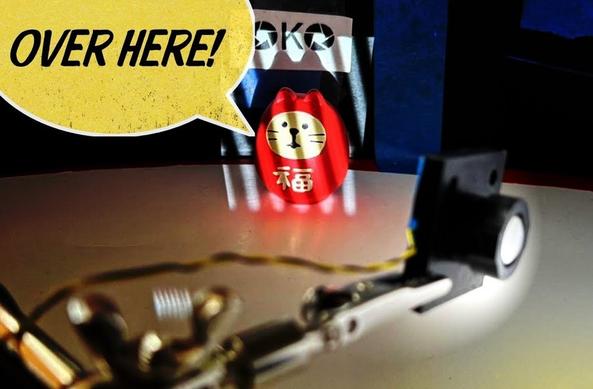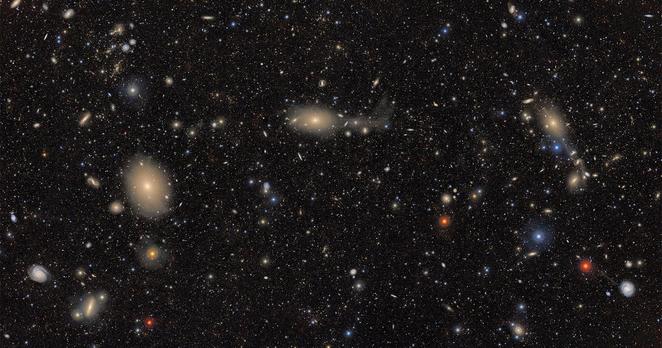This 1D camera captures 2D images of things it can’t see
https://blog.arduino.cc/2025/06/25/this-1d-camera-captures-2d-images-of-things-it-cant-see/

This 1D camera captures 2D images of things it can’t see
https://blog.arduino.cc/2025/06/25/this-1d-camera-captures-2d-images-of-things-it-cant-see/

The World’s Largest Camera Captures 10 Million Galaxies, Discovers 2,104 Asteroids in First Photos

Since the #PNG spec is getting some updates, I was thinking... you know what would be sick? Baking classic #lossy compression right into PNG.
I don't mean #JPEG or anything like that. Not even the #LossyPNG scheme I enjoy using where I reduce the number of colors to reduce the entropy. That wouldn't need any changes to the spec.
I'm thinking #Amiga HAM modes! Instant 3:1 (well, 2.4:1) lossy compression with (hopefully) minimal artifacting. That would be SICK!
Makes me want to throw together a Python script or something to read PNG files, apply the HAM "compression," and then see how the output looks. It wouldn't provide much compression savings with regular PNG, it would need a change to the format. But since I never had an Amiga, I'm curious to see how it looks, and how well it might scale to modern image resolutions.
Conceptually, it's not much different than 3:1 horizontal chroma subsampling, but might actually look a lot better.
Quick explainer: instead of having a 24-bit-per-pixel image, you have a 10-bit-per-pixel image, where the first two bits are a mode selector, and the last 8 bits are the actual pixel data. The modes are Hold and Modify{R,G,B}. Modify{R,G,B} modify just the red, green, or blue component of the 24-bit color for that pixel with the 8 bits specified. The modify mode assigns that pixel to be equivalent to the 8-bit value from a pre-defined palette or some pre-defined bit-assignment mode like RRRGGGBB or something. So basically, the horizontal color resolution is divided by 3, but sometimes you get lucky and there's no noticeable loss.
Hurricane Science Was Great While It Lasted
The U.S. is hacking away at support for state-of-the-art forecasting.
--
https://www.theatlantic.com/science/archive/2025/07/hurricane-science-noaa-cuts/683398/ <-- shared media article
--
https://www.ncei.noaa.gov/access/metadata/landing-page/bin/iso?id=gov.noaa.ncdc:C00797 <-- shared NOAA SSMIS page
--
https://www.earthdata.nasa.gov/data/instruments/ssmis <-- shared NASA SSMIS home page
--
#GIS #spatial #mapping #remotesensing #fedopendata #earthobservation #model #modeling #fedscience #fedservice #hurricane #imaging #SSMIS #spatialanalysis #spatiotemporal #weather #climate #climatechange #extremeweather #NationalHurricaneCenter #stateoftheart #forecasting #hurricaneseason #risk #hazard #mitigation #planning #management #NWS #loss #cost #economics
@NOAA @nasa
Did you catch yesterday's live stream of imaging DECtapes? You can read about the results and access the images here:
https://icm.museum/blog/?p=241
Like what we're doing? Please consider joining us today!
https://www.europesays.com/2189126/ EU Project ELENA Pioneers LNOI Platform for Next-Gen Photonic Circuits & Europe’s 1st Commercial Supplier of LNOI Wafers #Aerospace #analysis #B2B #BuyersGuide #CleanTechnologies #Cleantech #défense #Europe #Events #Imaging #industrial #jobs #laser #LifeScience #MaterialsProcessing #medicine #News #Optics #optics.org #Photonics #PressReleases #products #spie
#Huawei has officially #launched the #XMAGE #Awards 2025, one of the #world’s largest and most influential #mobile #photography #competitions, during the unveiling of its new #flagship #smartphone series, the HUAWEI Pura 80. The #competition continues to serve as a #global #platform for mobile photography enthusiasts and professionals to #showcase visual #storytelling through cutting-edge Huawei #imaging #technology. https://cnbusinessforum.com/huawei-launches-xmage-awards-2025-to-celebrate-global-mobile-photography-talent/
MRI method maps blood flows in reverse for deeper insight into brain physiology
https://medicalxpress.com/news/2025-06-mri-method-blood-reverse-deeper.html
https://www.europesays.com/2119287/ Hyperspectral Imaging Market to Hit $473M by 2029 #BCCResearchLLC #business #FoodProcessing #FoodSafetyTesting #HSI #hyperspectral #HyperspectralImaging #Imaging #markets #sensors #SpectralImage #testing
Tearing Down And Hacking The T2S+ Thermal Camera - [Dmytro] was able to lay his hands on a InfiRay T2S+ camera. It’s a capable therma... - https://hackaday.com/2025/05/23/tearing-down-and-hacking-the-t2s-thermal-camera/ #thermalimaging #androidapp #mischacks #imaging #camera
Looking for new collaborations, organising speakers for a conference, or assembling a committee?
Join the @focalplane_jcs network, a directory of international researchers with microscopy expertise.
https://www.europesays.com/uk/12336/ Genetic test outperforms PSA and MRI in spotting deadly prostate cancer early #Antigen #Biopsy #Cancer #Genetic #Genetics #GleasonScore #Imaging #MagneticResonanceImaging #Medicine #Prostate #ProstateCancer #ProstateSpecificAntigen #Research #Science #UK #UnitedKingdom
(04 Apr) We have the first video of a plant cell wall being built
Plant cells without a cell wall are fragile, so it’s hard to image its construction.
https://s.faithcollapsing.com/tr6yl
Archive: ais: https://archive.md/wip/zLy3L ia: https://s.faithcollapsing.com/7264y
Deep-learning system uses smartphone camera for heart rate monitoring
https://techxplore.com/news/2025-03-deep-smartphone-camera-heart.html
Thermal imaging could be a simple, highly accurate way to track vital signs
https://medicalxpress.com/news/2025-03-thermal-imaging-simple-highly-accurate.html
Hubble completes the largest galactic mosaic of all-time
https://bigthink.com/starts-with-a-bang/hubble-largest-galactic-mosaic/
Innovative microscope reveals full 3D molecular orientation in cells
https://phys.org/news/2025-02-microscope-reveals-full-3d-molecular.html
I realise I never did a re-#introduction after moving to my bespoke, artisanal instance. So here it is!
I'm a soon-graduating PhD student at #UBC Biomedical Engineering with a research focus on #imaging, #biomechanics and #simulation of rare pediatric hip disorders like #perthes disease.
My other interests are all over the place: #urbanism, #classiccars, #retrocomputing, #electoralreform, #crochet, #music composition, #linux and #fedi and more I'll probably add as I remember!
#PhysicsJournalClub
"Three-dimensional holographic imaging of incoherent objects through scattering media"
by Y. Baek, H. de Aguiar and @sylvaingigan
https://arxiv.org/abs/2502.01475
#optics #physics #imaging
As you daily experience anytime you look at anything, light scattering severely impairs your ability to image (mild scattering like mist makes things in a distance fuzzy, strong scattering like your own body makes it completely impossible to see what is happening inside or behind it). On one hand this is good, as it allows us to see where (e.g.) trees are so we don't bump into them. On the other hand there are a LOT of situations where you would really like to see what is going on behind a scattering medium (surely it would save a lot of exploratory surgeries).
The problem of imaging through a scattering medium is largely unsolvable in its most general form, but there are a lot of special cases where you can go surprisingly far, and people (me included) have spent a lot of time checking exactly how far.
In this paper the authors consider a set of small fluorescent objects behind a not-too-thick scattering medium, and look for a way to retrieve their 3D arrangement.
Problem: fluorescent emission means incoherent emission, so the phase information (which encodes a lot of information about position) is lost. Still, we can rely on the assumption that there is a finite (ideally not too large) amount of point emitters. Since each emitter is point-like, if we only measure the light that reaches us through the scattering medium at a single frequency (to be more realistic, a small bandwidth), we will see the incoherent sum of a speckle pattern per fluorescent emitter.
1/2
Live cell #imaging tools can reveal chromatin dynamics over time, but a multicolor #DNA imaging method is still needed. This study presents ParSite, based on the T. thermophilus ParB/ParS system, enabling simultaneous imaging of three genomic loci in living cells #plosbiology https://plos.io/40y7oae